The Army Painter’s Colour Primers are a combination of primer and coloured spray in one. The formula has been designed to be used on metal, plastic and resin miniatures. There are 22 colours to choose from plus two varnishes – advertised to be 100% matches to their corresponding Warpaints, the acrylic paint range from The Army Painter. Let’s take a closer look in this review.
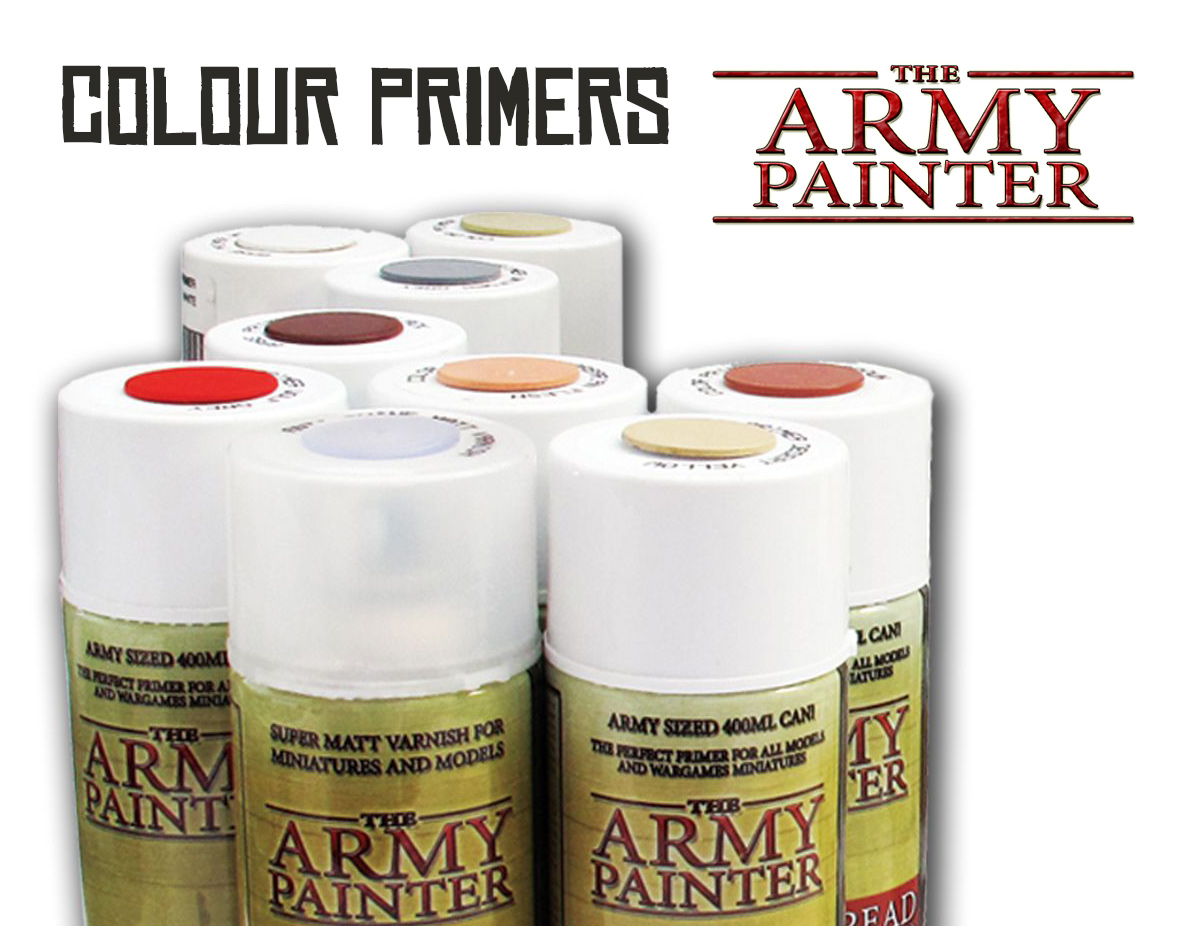

With an extensive range of 22 colours to choose from, Colour Primers make it easy to speed up your painting, especially for models with a dominating main colour, like Space Marines, Eldar, or Stormcast Eternals. Available in 400 ml cans, they are priced at a competitive 11.99 Euro for Matt Black, White and both varnishes, while the other colours are 12.99 Euro. In comparison, Games Workshop’s primers and spray paints are 14.50 Euro for Chaos Black and Corax White, 17 Euro for the other colours, and a whopping 25 Euro for Retributor Armour and Runelord Brass, all 400 ml cans as well.
Update 2023: The Army Painter has discontinued some of their Colour Primers and replaced them with new colours, including Greedy Gold Colour Primer, which we reviewed here.
How to use The Army Painter’s Colour Primers
The Army Painter created a video for how to achieve the best result with Colour Primers, as well as an in-depth PDF guide, but here is the summary: Shake for at least a minute, spray at a distance of no more than 20 cm, and spray in long burst while moving the spray back and forth. Of course, as with any primer or varnish, don’t spray outside when it’s too cold, humid or rainy. Once the spraying is complete, to prevent the nozzle from clogging up, turn the can upside down, and hold down the trigger until only transparent propelling agent comes out.
As The Army Painter’s Colour Primers combine primer and coloured pigment in one, they go on slightly thicker than other primers, especially the lighter colours. Therefore, as always, two thin coats are better than a single thick coat. Colour Primers are self-levelling to a degree, but only so much. If you haven’t used them before, it’s crucial to try them first on an old test model to get the hang of them, as it’s much easier to mess up models than with most other spray paints and primers.
100% Warpaints match
Colour Primers are advertised as a 100% match to the corresponding Warpaints. I couldn’t test all 24 Colour Primers, so here comes a random sampling. On the left side of the helmet, you can see the Colour Primer, and on the right the Warpaint version (sorry for the thick paint, it’s not representative of the primers’ thickness, as I sprayed and painted over the same helmets several times 😉
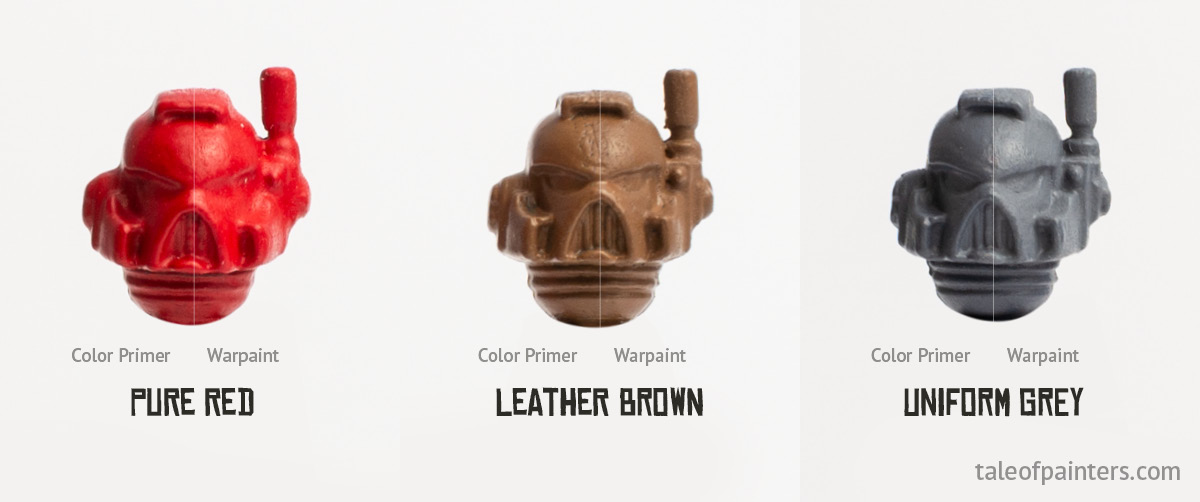

Pure Red and Leather Brown are pretty much spot on, it’s very hard to tell the difference between Colour Primer and paint. Uniform Grey is also pretty close, the Warpaints version only a nuance lighter.
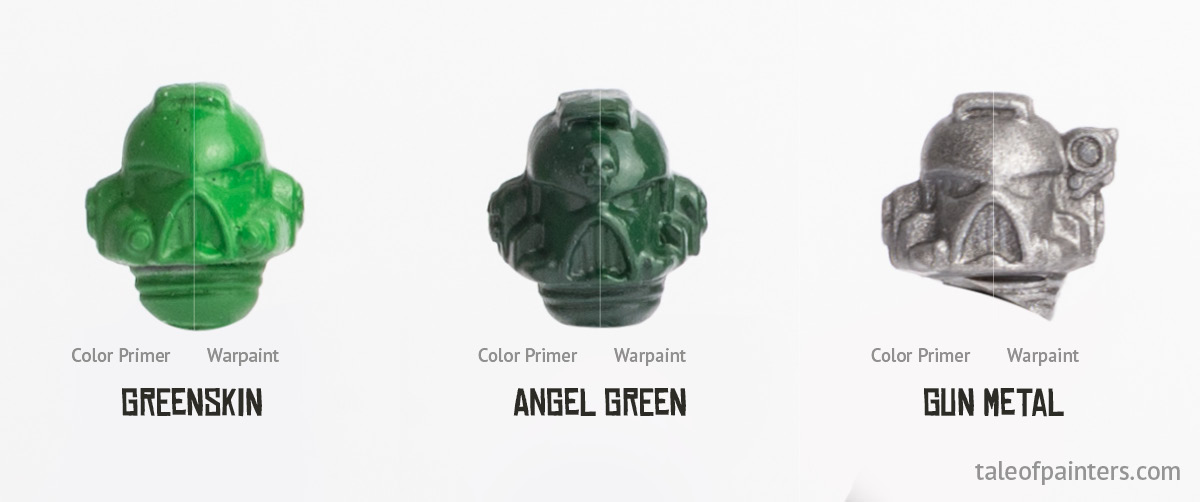

Greenskin is very close, the Warpaints version a nuance more vibrant (with a white undercoat the Colour Primer Version might be brighter). Angel Green is close as well, the primer version slightly darker. Gun Metal is very close again, the Colour Primer version only a nuance darker and with slightly grainier pigments.
For Gun Metal, I found you get more consistent results when you use short bursts at a 20 to 30 cm distance, rather than long bursts at 10 to 20 cm distance that is usually best for The Army Painter Colour Primers.
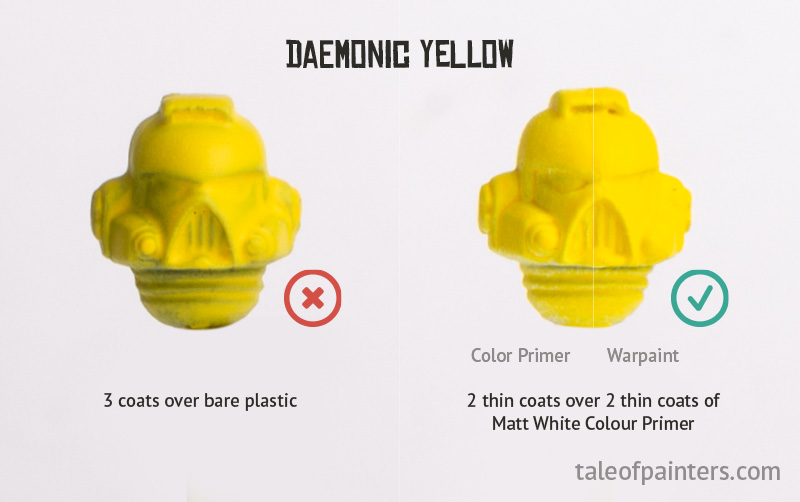

Daemonic Yellow Colour Primer is a special case. Yellow usually has the weakest pigments of them all, and this spray is no exception. When you spray it directly over plastic (or metal, resin …) you will need a lot of coats for an even coverage, inevitably clogging up the details of your model. Instead, start with a basecoat of two or three thin coats of Matt White Colour Primer (or GW Corax White), and apply one or two thin coats of Daemonic Yellow. When sprayed over white, the primer version of Daemonic Yellow is slightly lighter than the Warpaints version.
As you can see, Warpaints are an excellent match for their respective primers. Maybe not 100% (but then I’d mark this off as marketing speech), but like 99%. Well done, The Army Painter.
I actually think they match much better than Citadel paints to their respective spray paints – for example, I have a can of Mechanicus Standard Grey, and the difference to the paint version is much more noticeable than with The Army Painter’s products – the grey has a slight yellowish-greenish hue that isn’t present in the paint.
Anti Shine Matt Varnish review
Finding a good matt varnish is like the quest for the holy grail. I use an own-brand from a German DIY chain, however, there isn’t a store near the place I live so I always have to ask my parents to get me some. I used Munitorum Varnish from GW for a while, and while the finish is nice, it’s expensive and it frosted on my once. I put all my experiences and favourite matt varnishes in a post, so check it out here.
When you google for Anti Shine Matt Varnish from The Army Painter, you find mixed reviews on the web. Which is why I was very curious to try Anti-Shine for myself. Anti Shine is one of two spray varnishes from The Army Painter, the other called Aegis Suit, which is supposed to be more satin.
When using Anti Shine Matt Varnish it is essential to shake the can for at least a minute, better for two, to properly blend the matting agents. Don’t spray when it’s too cold or humid, and unlike Colour Primers, where you need to get closer to the model, keep a distance of at least 30 cm with Anti Shine. Apply multiple thin coats – thicker coats will leave a more satin result. And most importantly: always try on an old test model first!
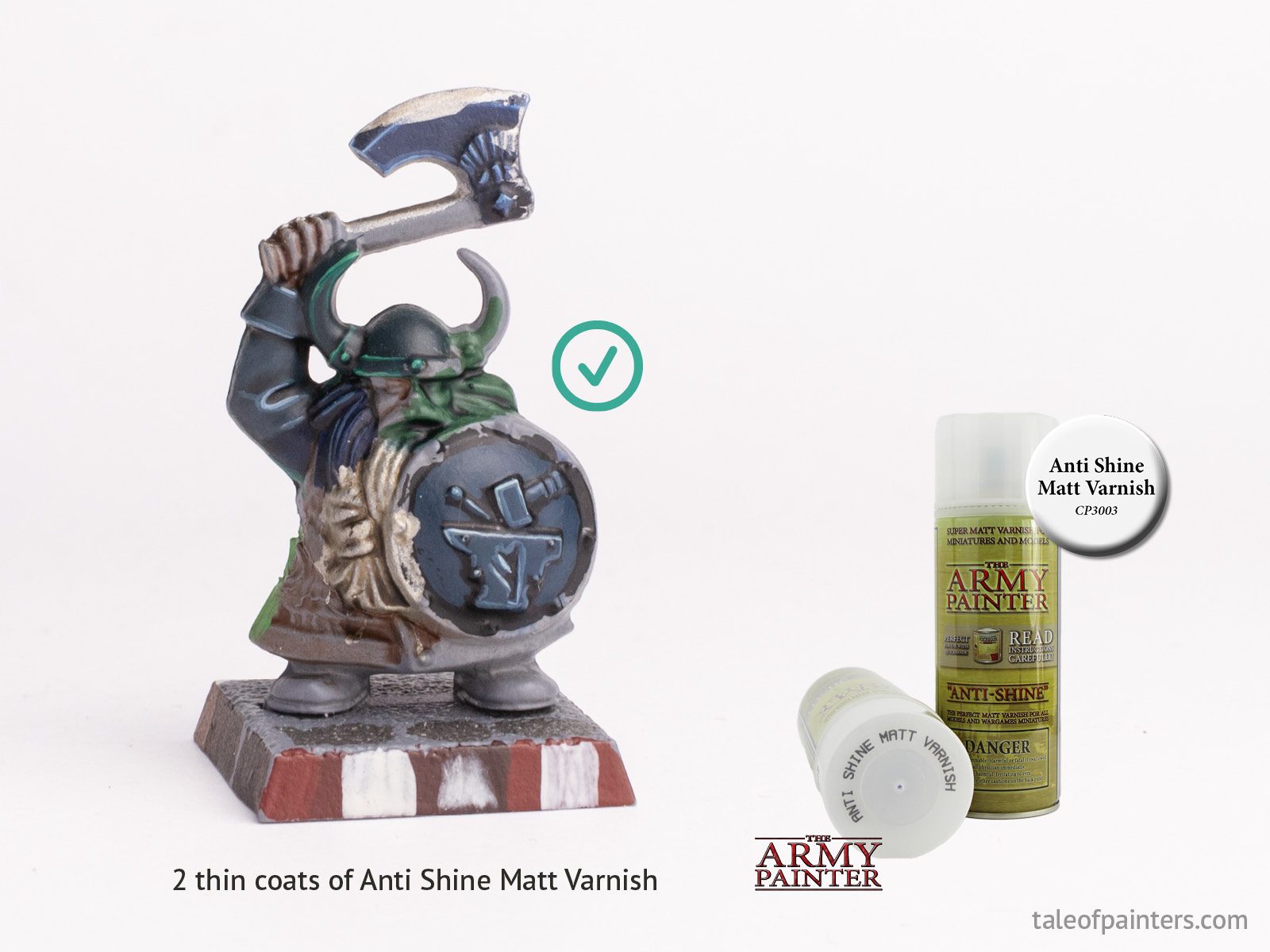

Above you can see my brave test model, a stoic Dwarf from the Old World. The front received two thin coats of Anti Shine Matt Varnish. The result is matt, but not dull. It’s similar to the natural sheen of acrylic hobby paints. Compared to Munitorum Varnish from Games Workshop it’s very similar, maybe a nuance more matt. Anti-Shine also reduces the gloss of paints like Gloss Shades from Games Workshop. Metallics don’t become dull either.
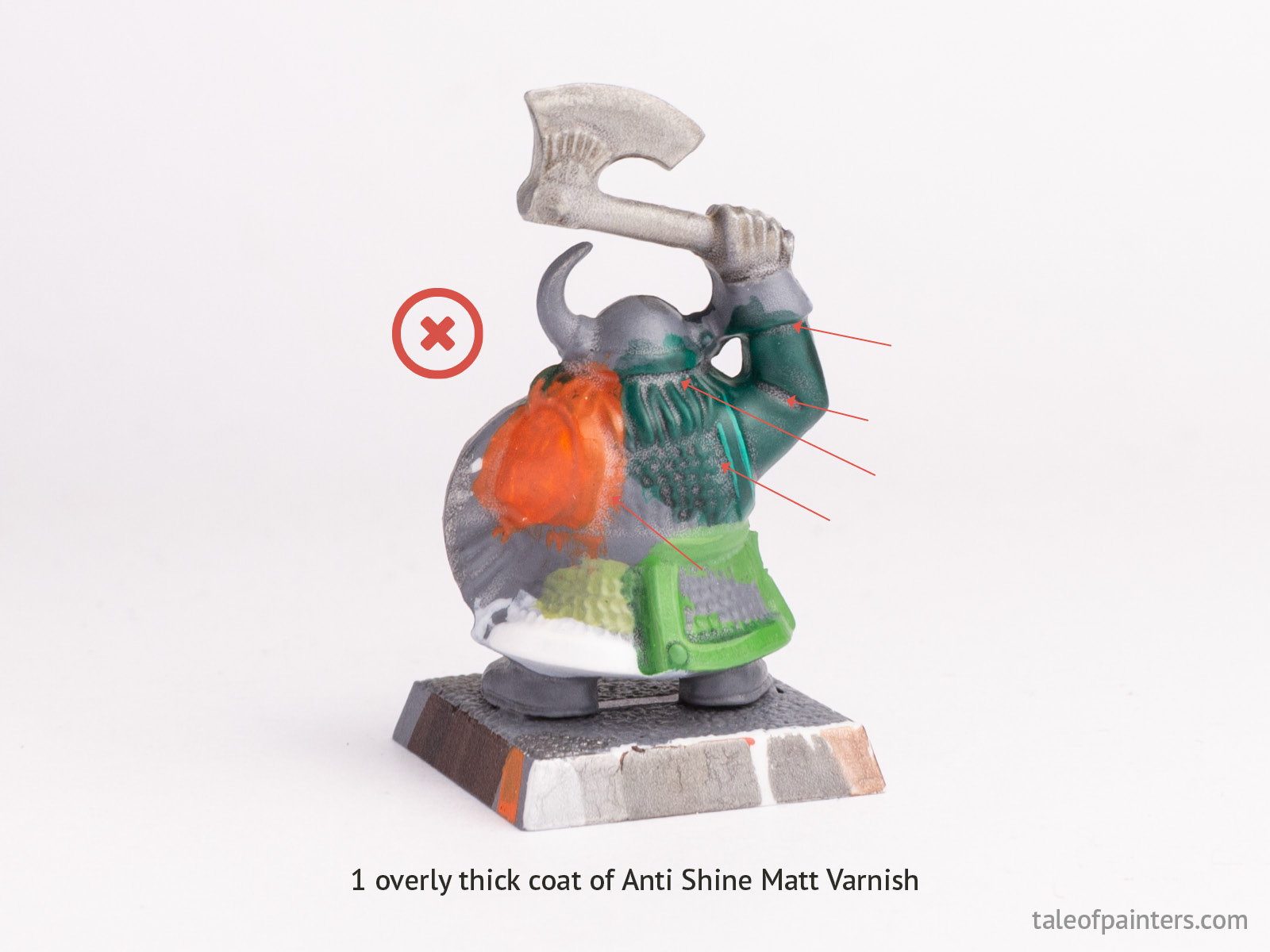

The back was sprayed with a single, overly thick coat of Anti Shine Matt Varnish, in a distance closer than the recommended 30 cm. Fortunately, there was no frosting, but the varnish became hazey in the recesses where the excess varnish gathered. The finish is also a bit more satin than with two thin coats.
All in all, I was quite happy with Anti Shine Matt Varnish. It was hard to mess up the model, at least with the can I got. It’s widely available at hobby stores and affordable at an RRP of 12.99 Euro. However, after I went through two or three cans, the next cans I bought were more satin and not as matt. I asked The Army Painter for a replacement, but that was rather satin as well, so I gave up and tried other matt varnishes. The quality control on The Army Painter’s spray paints doesn’t seem that great, which brings us to…
Thoughts after long-term use
Finally, I have to address the bad things you read on the internet about The Army Painter’s Colour Primers. I have to agree in parts, unfortunately. Achieving a perfect paint application is somewhat more difficult than with most spray paints, and I have already given some tips on this at the beginning of the post. But Colour Primers are the only miniature spray paints I have worked with that regularly clog their nozzles. And it has happened to me not once but several times that half-full cans died on me, as they lost all their pressure.
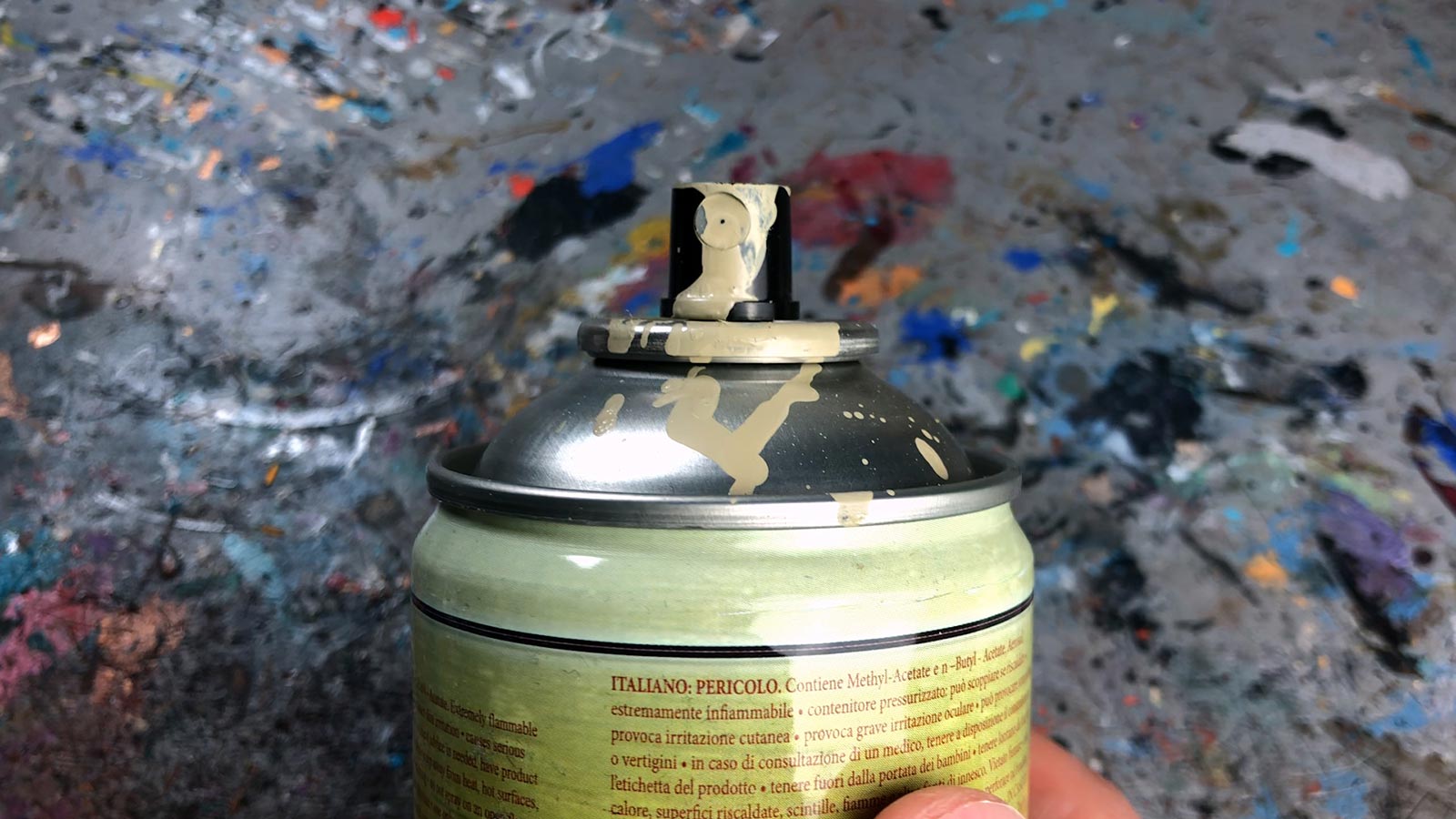
I had and have no problems with Leather Brown, Uniform Grey, and Angel Green, which I still use regularly. But especially light colours like Skeleton Bone seem to be more prone to this, so that I have switched to alternatives like Vallejo Hobby Sprays and Colour Forge in the meantime, except for the colours mentioned. Learn more about them in my primer and spray paint guide:
5.5Score
Pros
- Large selection of colours
- Good match for their Warpaints counterparts
- Affordable price and widely available
Cons
- More finicky to apply than most other spray paints and primers
- Go on a bit thick
- Clog up their nozzles more regularly than other primers
Final Verdict
With some clever planning of your paint schemes, The Army Painter's Colour Primers can be a great way to save some time, combining primer and basecoat in one. They also make tackling difficult colours like red, yellow and bone easier and are a great alternative if you don't have an airbrush. With 22 colours plus two varnishes, there is a spray for almost every occasion (and for every main Space Marine chapter). However, applying these primers is more difficult than most other miniature spray paints, and they have a habit to clog up their nozzles or lose their pressure after a while.








I don't want to bother you…
But can you tell me if you spray the Toom varnish from left to right, or with short bursts?
Hi Oli, I do short bursts, and usually apply two coats. It's really hard to mess up your models with this varnish though. It just needs at least half a day to a complete day to fully harden.
Thank you!
I think in this case i will wait 24h, before i aplly a second coat…
(with other Varnishes i waited 4-5h… but i think there is no drawback to wait longer, especially with this Varnish).
With the new Contrast Paints they release a new Varnish (Stormshield / Technical Paint – in the new Pots),
that dries matte… we will see
(over the time i "collected" more than 20 different Varnishes… and the search goes on ^^)
Hello Stahly, i hope it's ok that i write this specific text in German, because it's about a german Product.
Ich war heute im Toom und habe mir den von dir verlinkten Klarlack geholt… dachte ich zumindest, denn obwohl die Dose genau wie auf der Homepage aussieht, gibt es einen kleinen Unterschied. Auf der Sprühdose steht unten "für innen und außen, hohe Deckkraft, hohe Farbbrillanz". Bei dem Bild von der Toom HP steht nur "für innen". Hab ich da evtl. doch einen falschen Lack gekauft? Noch eine kurze Frage zum Schluß:
Hast du denn Toom Lack mit ganz kurzen Sprühstößen aufgetragen, oder von links nach rechts u. dabei gedrückt gehalten? & wie lange hast du gewartet bevor du eine zweite Schicht aufgetragen hast?
Ist jetzt etwas länger geworden… würde mich sehr über eine Antwort freuen, lass dir aber ruhig Zeit… werde erst wieder in ca. 1nem Monat zum Lackieren kommen. Vielen Dank, wünsch dir ein streßfreies und produktives Wochenende.^^
Haven't used Aegis Suit yet, probably won't try, as Anti Shine is already a semi-matte/satin finish, so Aegis Suit might be too glossy for my taste.
Dank dir!
I will try the Toom-Varnish… better to wait a day instead of frosting.
I had good results with one thinn coat of Aegis Suit Varnish and on top Anti Shine Varnish.
Two thinn coats of Anti Shine is imho not very protective and dulls the Metallics (at least with my Testmodels)
Gerne 🙂
How is the gloss level of Aegis Suit in comparison to Anti Shine?
Aegis Suit is comparable with old Purity Seal Varnish (gloss level is a satin finish). if your looking for a real matt dust dry Varnish you must try AK Interactive Ultra Matte Varnish… It's a Airbrush/Brush on Varnish, i only tested it with brush and the Matt Level is noticeable better than Anti Shine or Vallejo Matt Varnish.
As always, very good Review. Have you tested the Aegis Suit Varnish? Would you please tell me where you buy your Matt Varnish (Obi/Toom)… and the specific name of it? I like the finish of you Models very much.
I used to use this varnish from Toom: https://toom.de/p/universal-spruehlack-seidenmatt-farblos-400-ml/8200055
Nowadays I use Munitorum Varnish because the finish is similar but dries in 20 Minutes, the Toom varnish needs a day to become fully hardened. Once the can is empty, I'll switch to Army Painter Anti Shine as it's cheaper. However, in 7 or 8 years with the Toom varnish I never had a problem, while the Munitorum Varnish frosted once when I applied too much in one go, so yeah.